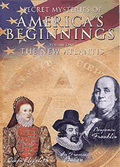Other
Hannes
Articles:
NAIS SPAWNED BY INTERNATIONAL ENTANGLEMENTS
By
Doreen Hannes
March 24, 2007
NewsWithViews.com
If you've been wondering where the insanity masquerading as our federal government 'food safety' and animal health protection regulations and laws are coming from, you can now say with certainty that they descend from the organizations within and tied to our international alliances.
Before you throw a conditioned response out that this is all just 'conspiracy theory' propagated by right wing nut cases, you had best be able to understand the impact on trade of the SPS and TBT agreements made through the WTO (World Trade Organization) and be able to relate the position of the United States in the OIE and Codex.
Should you be unfamiliar with the NAIS (National Animal Identification System) the shortest explanation that can be given of the proposed system is that anyone who has any type of livestock, say two chickens, will have to register their property, complete with global positioning satellite coordinates, microchip their chickens with an NAIS ISO11785 compliant chip, and report within 24 hours if said chickens ever leave the property, hatch out chicks (another chip required), go to the vet or die. No kidding. To learn more about that, you must read the "Draft Strategic Plan" and the "Draft Standards" which are available only on line. The USDA will not send you copies of these documents, but they will send you a nice glossy packet with a 'soft' description of the program.
This is not an easy subject to relate to people who, by design, have very limited knowledge of our government's involvement in these organizations, and even less understanding about the mechanisms employed in the organizations. It's extremely complicated, and at the very least veiled to public scrutiny, but if you are willing to dig and read hundreds of pages of mind numbing rules and agreements, it is there and it is proven.
An introduction to acronyms is necessary. The players involved in the proposed National Animal Identification System being pushed by the USDA, and to be managed by APHIS (Animal Plant Health Inspection Service) are varied. First there is the WTO (World Trade Organization) which reached an agreement amongst participating countries several years ago in Uruguay called the SPS (Sanitary and Phytosanitary) and TBT (Technical Barriers to Trade) agreements.
In laymen's terms what the SPS agreement says is that each member country can make regulations that must be met by other member countries in order to trade in agricultural goods with each other. These regulations must be in the interest of protecting the country making the regulations from disease, pests, or perceived health dangers. Countries making regulations cannot impose more strict regulations on importer nations than they do on their own nation.
Then there was the TBT (Technical Barriers to Trade) agreement made at the same time in Uruguay. What that says is that developed countries must help less developed countries to advance technologically to be able to participate in trade with other member countries. Developed countries cannot require more than a country is able to achieve and the developed countries need to help the less developed countries to meet their own criteria through funding and other assistance.
Then there is the OIE (Office Internacional Epizooities) or World Animal Health Organization, which although it is independent of the UN in origin works very closely with both the FAO (Food and Agriculture Organization of the UN) and Codex Alimentarius which is a child of the UN and FAO. Codex can be best understood as being the global FDA and OIE as the global USDA. The Untied States of America has membership in both the OIE and the UN and therefore Codex.
The OIE has authority over all member nations veterinary services. Most of the OIE rules are rather innocuous, however they have become increasingly involved in issues directly relating to trade since the advent of the WTO in 1994. OIE has also been increasingly involved with Codex and are working in concert on nearly everything at this time. Of particular importance to the subject of the NAIS (National Animal Identification System) is the issue of 'traceability/product tracing' and 'good farming practices'.
The OIE has a publication available on line called the "Terrestrial Animal Health Standards Commission" which is absolutely loaded with information regarding "traceability/product tracing" and Codex standards on the subject.
On page 41 of the TAHSC (Terrestrial Animal Health Standards Commission) it states that there is a critical relationship between animal identification and the traceability of animal products and that animal identification and traceability are "key tools for animal health, including zoonoses (diseases that can be transmitted from animals to humans), and food safety", as well as "incidents, vaccination programmes, herd/flock management, zoning/compartmentalization, surveillance, early response and notification systems, animal movement controls, and health measures to facilitate trade."
Also worth noting from page 41 is the following paragraph:
"The Competent Authority in partnership with relevant government agencies and the private sector should establish a legal framework for the implementation and enforcement of animal identification and animal traceability in the country. In order to facilitate compatibility and consistency, relevant international standards and obligations should be taken into account. This legal framework should include elements such as the objectives, scope, organizational agreements including the choice of technologies used for identification and registration, obligation of the parties, confidentiality, accessibility issues and the efficient exchange of information."
In Appendix XXXIV of the Terrestrial Animal Health Standards document it states that VS (veterinary services) are the "Competent Authority" for animal identification and traceability in all member countries. It also does such fun things as role the words "animal identification system" into the word "animal identification" so that the smaller term may legally be referred to meaning an entire national or international system.
The European Union has made no real secret of the fact that their animal identification requirements are in line with both Codex and the OIE. It is my understanding that RFID will also be a mandatory requirement in the EU in January of 2008. There are a few catch phrases that have become fairly common stemming from the mandates of Codex, such as "farm to fork" traceability and "from stable to table", that leave no doubt of the identity of the progenitors of the US National Animal Identification System. The USDA and the OIE and Codex as well as the FAO (Food and Agriculture Organization of the UN) state that this is consumer driven.
While there may be a desire on the part of consumers to know the conditions under which their food was raised, the conditions which spark that desire are not conditions caused by small or medium sized agricultural endeavors, or even large privately owned operations. The corporate ag companies with their disregard for life and use of chemicals, antibiotics and hormones to improve their bottom line are responsible for the lack of confidence felt by those who cannot raise their own food. Yet the net effect of this program will be much higher cost for food and a loss of choice for the consumer as smaller farmers will be driven out of business by the costs of compliance and loss of production time because of the increase in paperwork and reporting needs as well as the many millions who will not be able to comply with the system because of deeply held religious convictions or aversions to the loss of freedom necessitated by the monitoring and surveillance implicit in this program.
As a matter of fact, corporate ag will be one of the few beneficiaries of this system because they will be allowed to tag their animals as groups or lots under only one tag per group/lot whereas those who practice more natural forms of animal rearing will need to tag each and every animal born at additional cost with additional reporting time. Reports may also be required on what is being fed to the stock as 'assurance' schemes are repeatedly referred to in both OIE and Codex guidelines.
On page 37 of theTAHSC (Terrestrial Animal Health Standards Commission document referred to above) there is a clear and indisputable tie to the Bioterrorism Act of 2002 which passed into law and is enforced by the FDA in the United States. The Bioterrorism Act of 2002 is the Act which is requiring that hay producers in the US register their premises and report who drove the truck, which field it was from, who worked on the harvesting of the hay and to whom the hay was sold. A quote from the TAHSC document showing the clear link follows:
"�the Task Force on Animal Feeding (May 2004) agreed to add a footnote to the title of Section 4.3 "Traceability/Product Tracing and Record keeping of Feed and Feed Ingredients" to indicate the definition developed by the Codex committee on General Principles applied to the Code (Terrestrial Animal Health Code, of the OIE) as appropriate�..the prompt trace-back of feed and feed ingredients should be to the immediate previous source and trace forward should be to the next subsequent recipients."
Throughout these documents are references to harmonization of identification and traceability methods and standards. In one document by Perry, harmonization is defined as, "the establishment, recognition and application of common sanitary and phyto sanitary measures by different Members." The United States is a "Member" so the directions following harmonization apply to the US. For food safety, (feed included) we must refer to Codex, for animal health the authority goes to the OIE. In the World Trade Organization documents regarding the SPS (sanitary and phytosanitary agreement) and the TBT (technical barriers to trade agreement) it is recommended that any disputes be mediated by the OIE or Codex.
It is abundantly clear that through these international entanglements our officials are both legislating and regulating our God given and Constitutionally guaranteed rights away. In the name of international trade and globalization these officials have agreed to implement a plan that is destructive to our nation's existence, as well as our freedom to feed ourselves without intense surveillance.
|
Subscribe to the NewsWithViews Daily News Alerts! |
As
a nation we must ask ourselves, is our freedom for sale in the global
market? Is selling beef to Japan important enough to throw our Constitution
and our children's future into the trash can? Can we not support ourselves
agriculturally with the excellent controls we already have in place?
Is your freedom worth more than all the bananas you may eat? To quote
Patrick Henry, "Is life so dear and peace so sweet as to be purchased
at the price of chains and slavery? Forbid it, Almighty God! I know
not what course others may take, but as for me,_____________________.
I hope you can fill in the blank.
� 2007 Doreen Hannes - All Rights Reserved
Doreen Hannes is a homesteading mom, and a truly grass roots activist for small scale and traditional farming rights. She has thoroughly researched the origins and impacts of "Free Trade" agreements and National Animal Identification System in particular and has been a major force in the anti-NAIS movement both nationally and in Missouri for over a year.
Her mission is to expose the procedures and methods being employed to destroy the God given rights of this once great republic. Doreen is a frequent guest on talk radio programs and has written extensively on the NAIS.
E-Mail: animalwaitress@yahoo.com
It is abundantly clear that through these international entanglements our officials are both legislating and regulating our God given and Constitutionally guaranteed rights away.









